Here you will find labeled in blue (1-20) a comprehensive Helsinki self-guided walking tour that should take you the good part of a day. The walk is approximately 5 km in length and is along mostly flat ground. The tour starts in the north of Helsinki at the 1952 Olympic site and ends at the Suomenlinna fortress.
The idea is to get an overview of the city and its architecture. You can see the sites from the outside or go inside the buildings if they are open.
Some of the points of interest have entry fees but there are quite a few that are free. Most of the museums are big and warrant a return visit to properly explore them.
There are links to the official websites of the attractions so you can easily get the latest information. If you plan to revisit the museums consider getting a Helsinki card as it may work out cheaper.
Information on the Helsinki Red Full Day Self-guided Bicycle Tour (22-35) can be found here.
Click on the titles of the attractions to open up Google maps for easy navigation.
A great place to start a tour of Helsinki. The best way to see the stadium and the surrounding landscape is from the 72-meter stadium tower. (official website)
Finland was selected to host the 1940 Summer Olympics, but due to the outbreak of World War II, the Olympics were canceled. Following the war, Finland hosted the 1952 Olympics. It was and still to this day is the northernmost city at which a summer Olympic Games have been held.
The Helsinki 1952 Olympic Games were also the games where the most number of world records were broken, surpassed only by the 2008 Summer Olympics in Beijing. The Soviet Union, the People’s Republic of China, Hong Kong, Indonesia, Israel, Thailand, and Saarland made their Olympic debuts in Helsinki 1952. The stadium was also reused for the 2005 World Athletics championships.
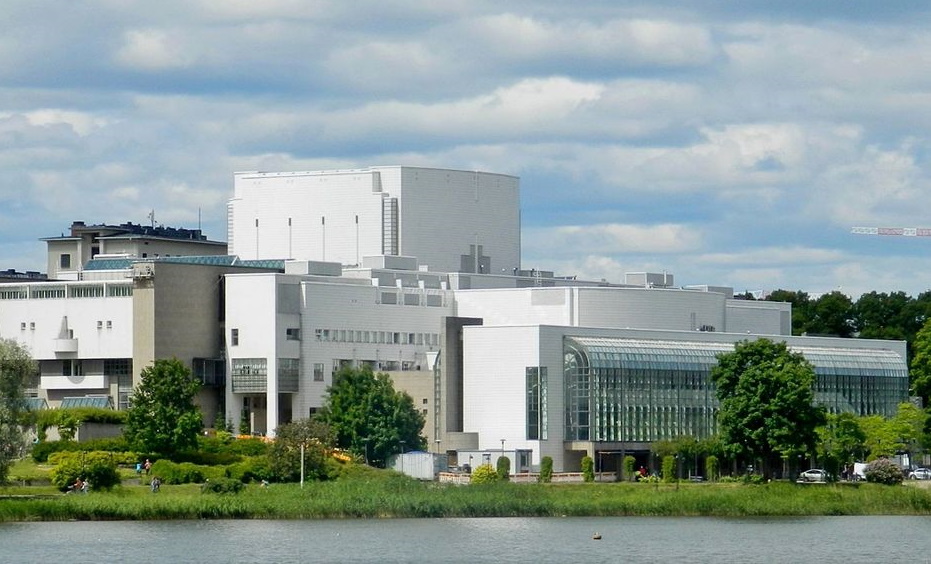
The Finnish National Opera house sits on the northeast shore of Töölö bay. It was opened in 1993 to host Opera and Ballet performances.
The Opera House features two auditoriums, the main auditorium with 1,350, seats and a smaller studio auditorium with 300-500 seats.
The Finnish National Opera stages four to six premieres a year with close to 140 performances. The Ballet organizes around 110 performances annually. The Finnish National Opera has around 250,000 visitors a year.
The building is accessed from the Töölö bay side during opening hours. It is possible to get a guided tour but it needs to be arranged in advance. (official website)
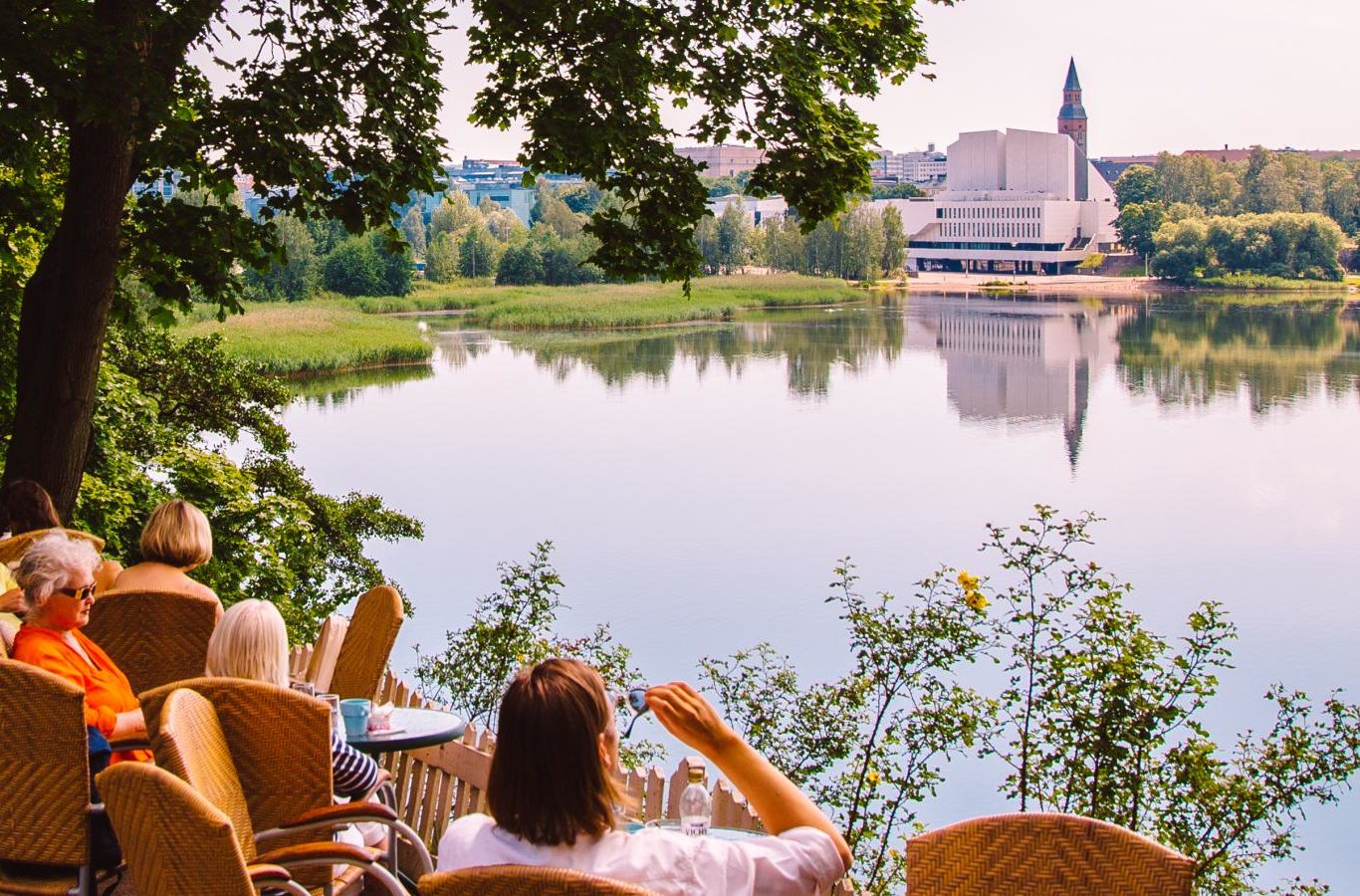 Enjoy a nice walk along the west shore of Töölö bay. It is a popular destination for joggers and cyclists. During the summer it is common to see families picnicking on the green grass.
Enjoy a nice walk along the west shore of Töölö bay. It is a popular destination for joggers and cyclists. During the summer it is common to see families picnicking on the green grass.
There is a circuit that loops around the entire bay. On the east side are some old manner houses and cafes – the railway tracks out of the city run behind them.
the south shore there is a boat rental shop and some public exercise equipment.
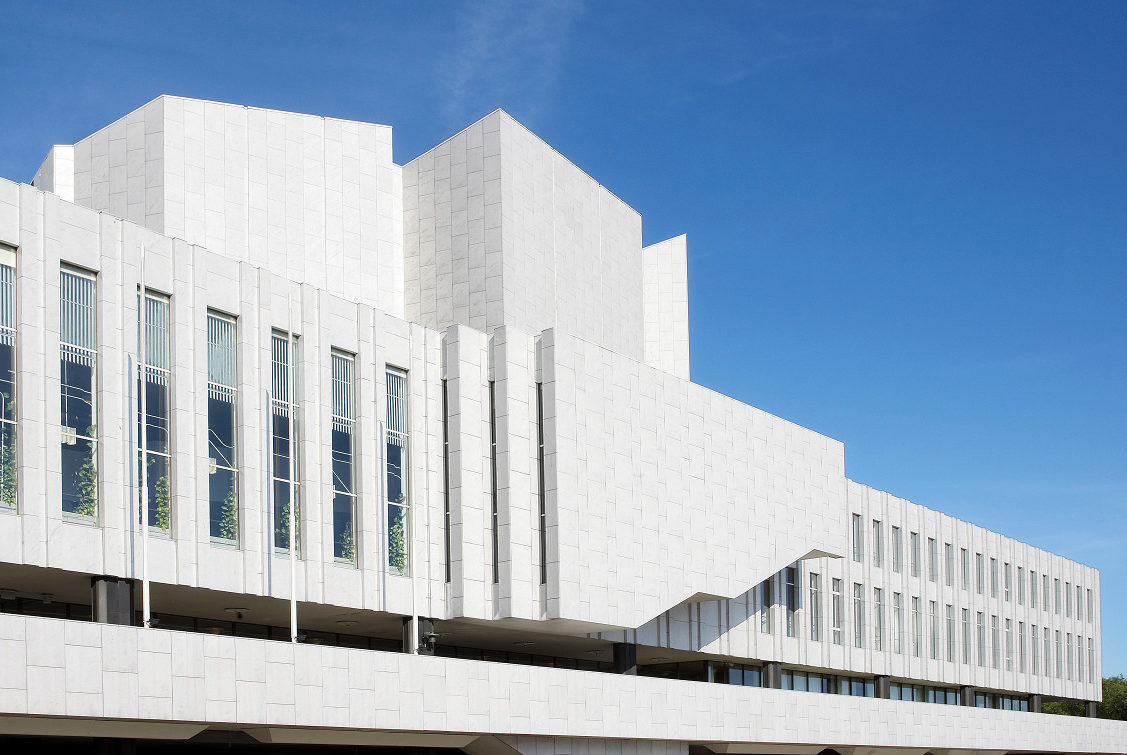 Finlandia Hall is an architectural masterpiece of the renowned Finnish designer and architect, Alvar Aalto. Situated on the south Töölö Bay shore it serves as a congress and event building.
Finlandia Hall is an architectural masterpiece of the renowned Finnish designer and architect, Alvar Aalto. Situated on the south Töölö Bay shore it serves as a congress and event building.
The building first opened its doors in 1971 after four years of construction. The building was further extended in 2011 with additional exhibition and meeting facilities.
You can drop in for a coffee and look around the foyer areas of the building or book an official tour which takes a more extensive look at the building. (official website)
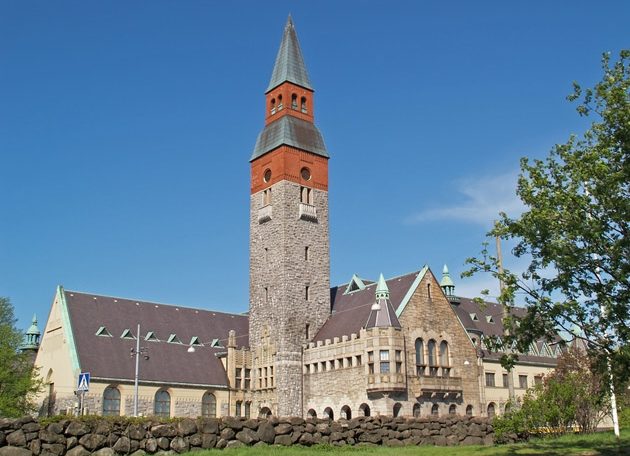
The National Museum of Finland presents Finnish history from the Stone Age to the present day, through objects and cultural history.
The building was built from 1905 to 1910 and opened to the public in 1916. The style of the building is called the National Romantic Style, popular in the early 19th and 20th centuries.
The museum was named the Finnish National Museum after Finland’s independence in 1917. Of interest when you walk through the doors is the broken glass and bullet holes in the building from the Finnish civil war (1918).
The entrance fee is €12 for adults and €9 for concession holders. People under 18 are free. (official website)
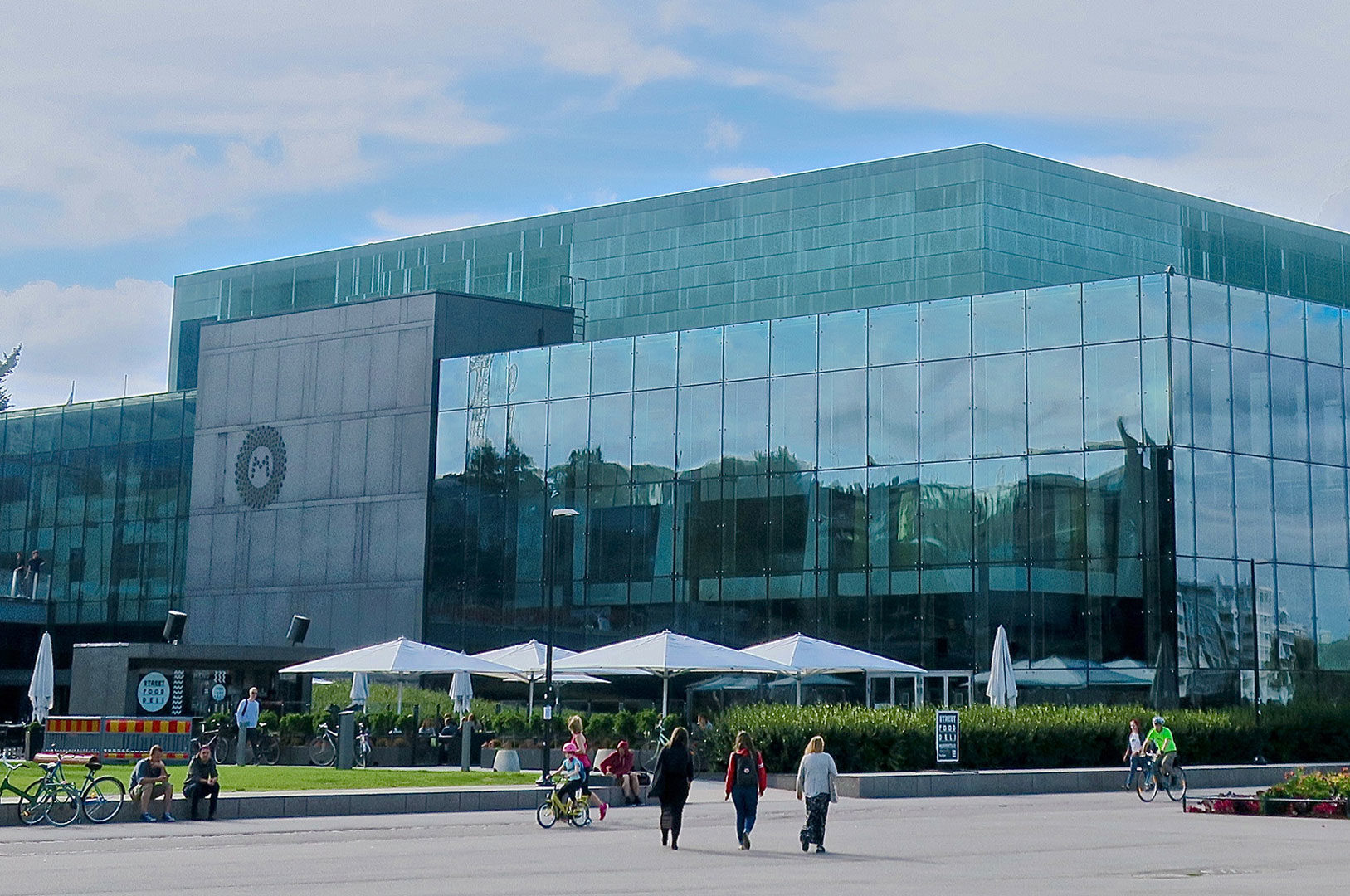 Known in Finnish as Musiikkitalo, this venue is a concert hall and a music center. It is home to the Sibelius Academy and two symphony orchestras.
Known in Finnish as Musiikkitalo, this venue is a concert hall and a music center. It is home to the Sibelius Academy and two symphony orchestras.
Due to the poor acoustics in the Finlandia hall and the fact that it was being used as a multi-purpose building, there was seen a need to construct a purpose-built building for music.
The building was completed between 2008-2011 at a cost of €189 million. It officially opened its doors in mid 2011.
The main concert hall seats 1,704 people. The building also has five smaller rooms for 140–400 listeners. It is possible to walk around the main areas of the building during open hours. There are often free concerts during the summer. (official website)
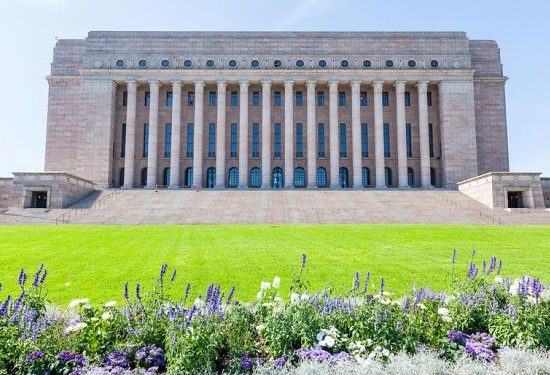 Home to the sitting Finnish parliament of 200 members who are elected for a 4-year term. They receive around €7K in salary plus another €1-3K in expense allowances.
Home to the sitting Finnish parliament of 200 members who are elected for a 4-year term. They receive around €7K in salary plus another €1-3K in expense allowances.
The building was constructed 1926–1931 and was officially inaugurated on March 7, 1931. Johan Sigfrid Sirén was the chief architect.
It was designed in a stripped classical architectural style combining Neoclassicism with early twentieth-century modernism.
There are a few guided tours during weekdays and on the weekends. It is also possible to watch parliament sessions from the public balcony. (official website)
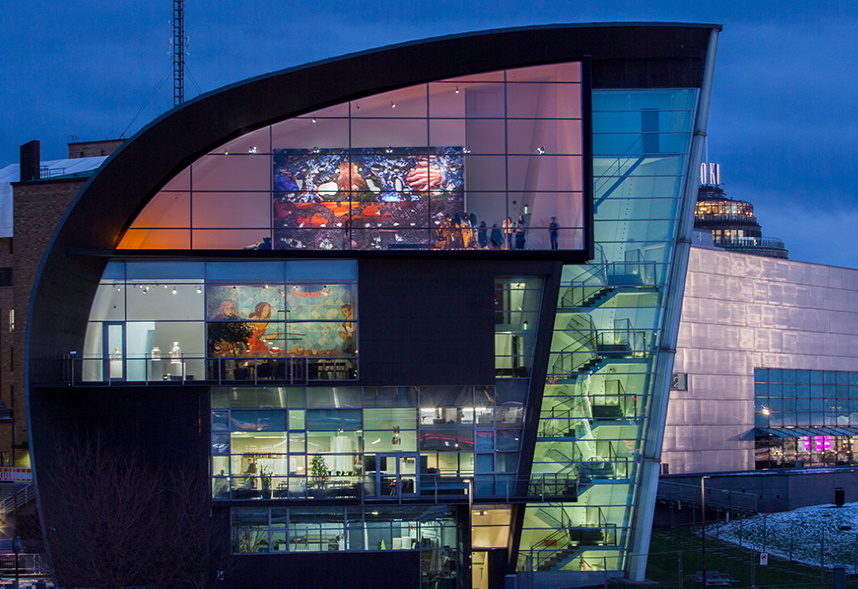 The Museum of Contemporary Art, known by its name Kiasma in Finnish, was designed in 1992 by Steven Holl from the USA. He was the winner of an international design competition for the building which saw 516 entries.
The Museum of Contemporary Art, known by its name Kiasma in Finnish, was designed in 1992 by Steven Holl from the USA. He was the winner of an international design competition for the building which saw 516 entries.
construction work on the building began in 1996, and the museum opened in May 1998. The building houses collections which include works by around 8,000 artists.
Kiasma attracts over 300,000 visitors per year. The entrance fee is €15 for adults and €13 for concession holders. People under 18 are free. (official website)
(while passing the building keep an eye out for the wartime president Mannerheim statue)
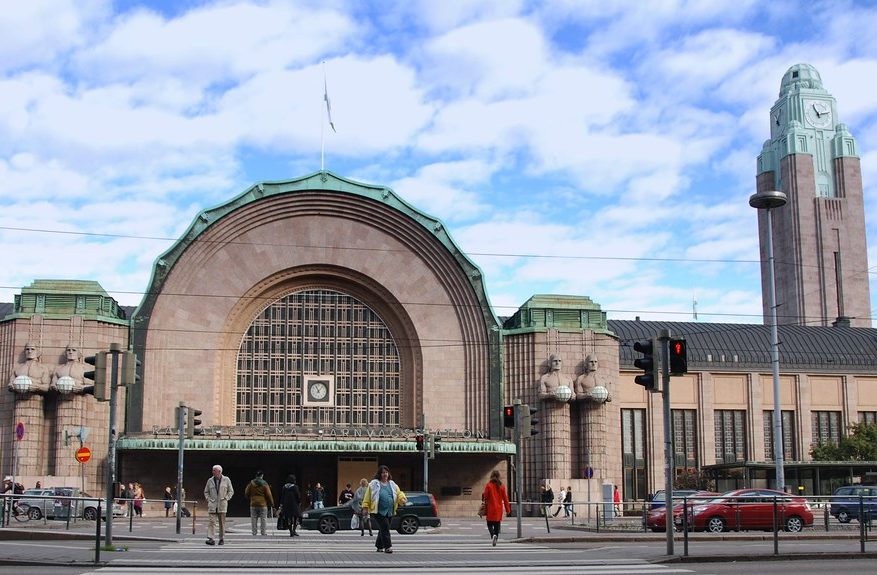 An iconic symbol of Helsinki, the Central Railway station you see today was built in 1909 based on a revised design of the Finnish Architect Eliel Saarinen.
An iconic symbol of Helsinki, the Central Railway station you see today was built in 1909 based on a revised design of the Finnish Architect Eliel Saarinen.
Helsinki’s earlier first railway station was built on the site in 1862 but needed to make way for the present-day larger and grander station.
The station’s distinguishing features are its clock tower and the two pairs of statues holding the spherical lamps on either side of the main entrance. The building is built from Finnish Granite and has the distinctive copper roofing of the period.
The building serves as the terminus for all trains in the commuter rail network, as well as for all Helsinki-bound long-distance trains. The Central Railway Station metro station is also located in the same building. It is used by approximately 400,000 people per day.
Incidentally, one of Finland’s presidents, Kyösti Kallio died there from a heart attack while waiting for a train. (official website)
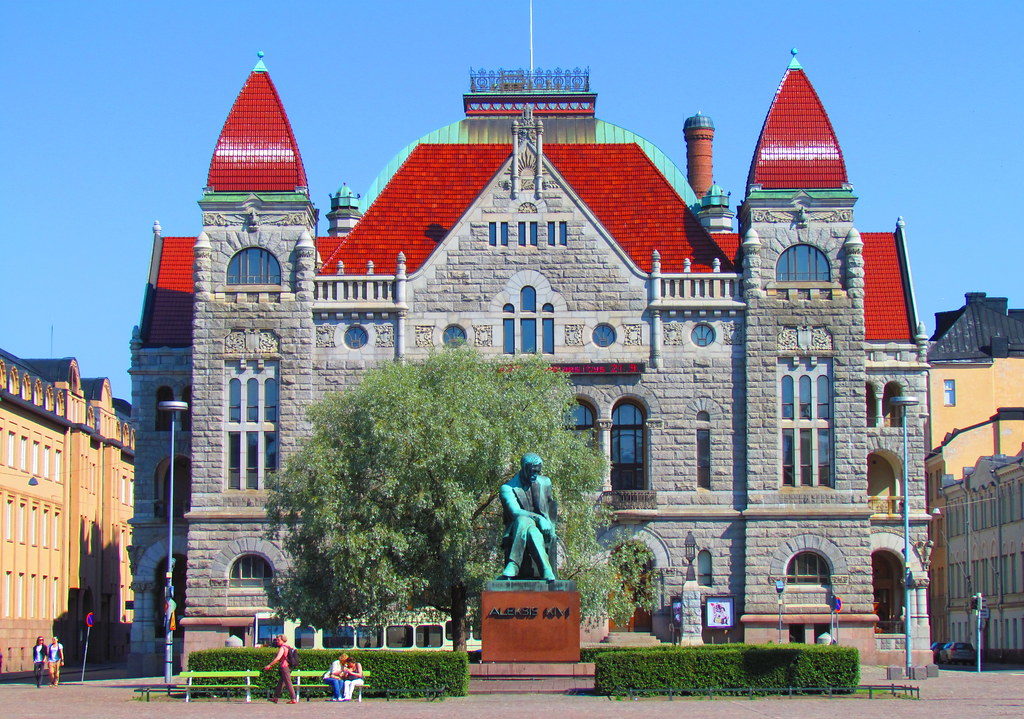
The Finnish National Theatre is the oldest Finnish speaking professional theatre in Finland. It was established in 1872 and received its current purpose-built theatre in 1902.
The theatre was designed by architect Onni Tarjanne in the National Romantic style, inspired by romantic nationalism. It has 4 stages with the biggest seating 885 people.
The theatre is reported to be haunted by 3 ghosts. It is generally only open to those attending performances. (official website)
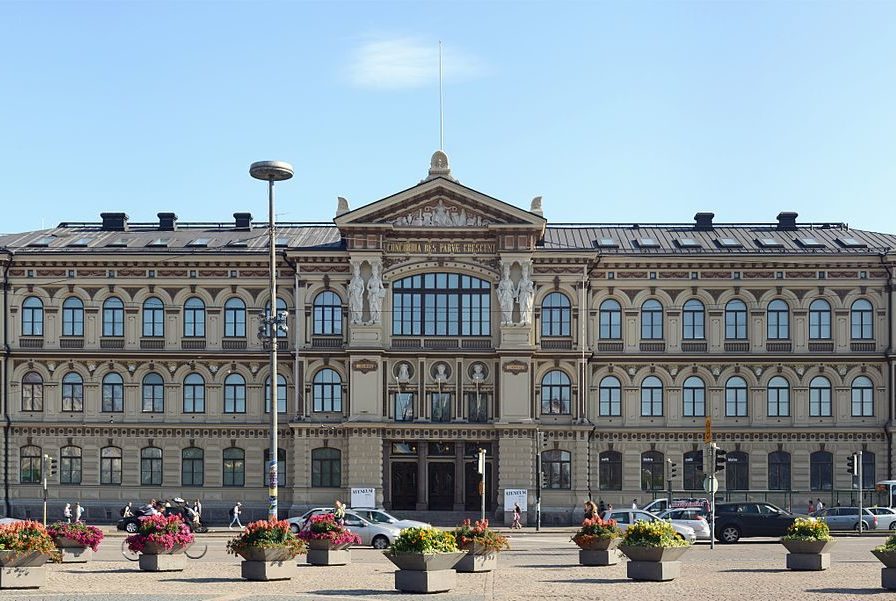
The Ateneum Art Museum is part of the Finnish National Gallery and houses the national Fine Art collection.
The collections of Ateneum include extensively Finnish art from 18th-century rococo portraiture to the experimental art movements of the 20th century. The collections also include some 650 international works of art.
The Ateneum building was designed by Theodor Höijer and completed in 1887. The Ateneum, representing the Renaissance, is symmetrical in structure. Its façade is decorated with sculptures and embossed images that contain a wealth of symbolism.
The entrance fee is €17 for adults and €15 for concession holders. People under 18 are free. (official website)
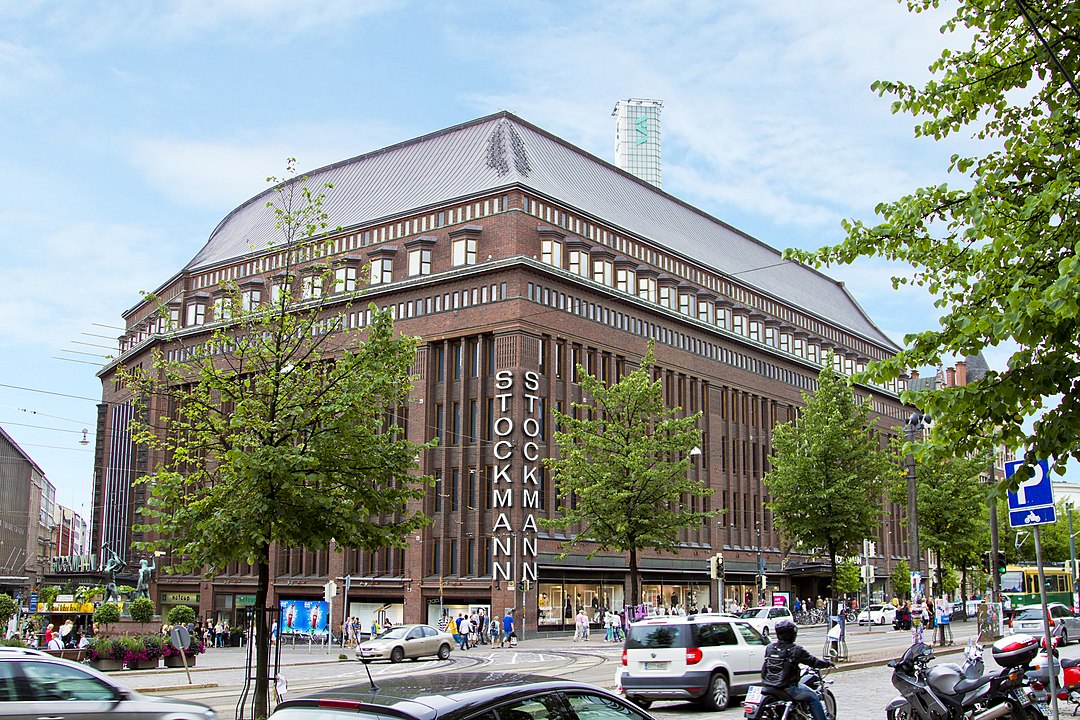 Stockman is the largest and oldest department store in Finland. It was established by Georg Franz Stockmann, a merchant from Germany in 1862. The original building was in Senate Square near the Helsinki Cathedral.
Stockman is the largest and oldest department store in Finland. It was established by Georg Franz Stockmann, a merchant from Germany in 1862. The original building was in Senate Square near the Helsinki Cathedral.
The flagship store visible today was finished in 1930. It was very fancy for the day, complete with revolving doors, a soda fountain, and escalators. It has 50,000 square meters of floor space and is still the largest Department store in the Nordics.
The first TV broadcast in Finland was done from the Stockmann building in 1950. Today the store receives approximately 17 million visitors a year. (official website)
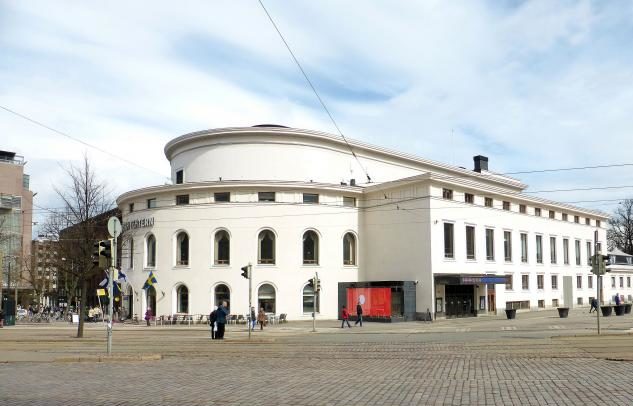 The original Swedish theatre was built on the site you see today in 1860 but was destroyed by fire only 3 years after its opening.
The original Swedish theatre was built on the site you see today in 1860 but was destroyed by fire only 3 years after its opening.
The building visible today was completed in 1866 based on the Neoclassical design of the Russian Architect, Nicholas Benois.
The theatre was known as the “New Theatre” until the Finnish theatre was opened in 1887. After that is was referred to by its current name.
The building was extensively renovated in 1935 by architects Eero Saarinen and Jarl Eklund. The richly decorated facade of the building was replaced with a new facade representing functionalism.
On average, the Svenska Teatern produces 8-10 pieces per year. The theater has about 120 permanent employees, of whom 19 are actors.
The theatre has a bar and restaurant that is open on most days. Guided tours can be organized by contacting the theatre. (official website)

Esplanadi is an esplanade and urban park in downtown Helsinki.
It is a popular place for people to picnic and hang out with friends.
There are often live music performances during the summer.
The park was designed by the architect Carl Ludwig Engel and was opened in 1818. It contains many statues including the monument of Johan Ludvig Runeberg, a Finnish poet.
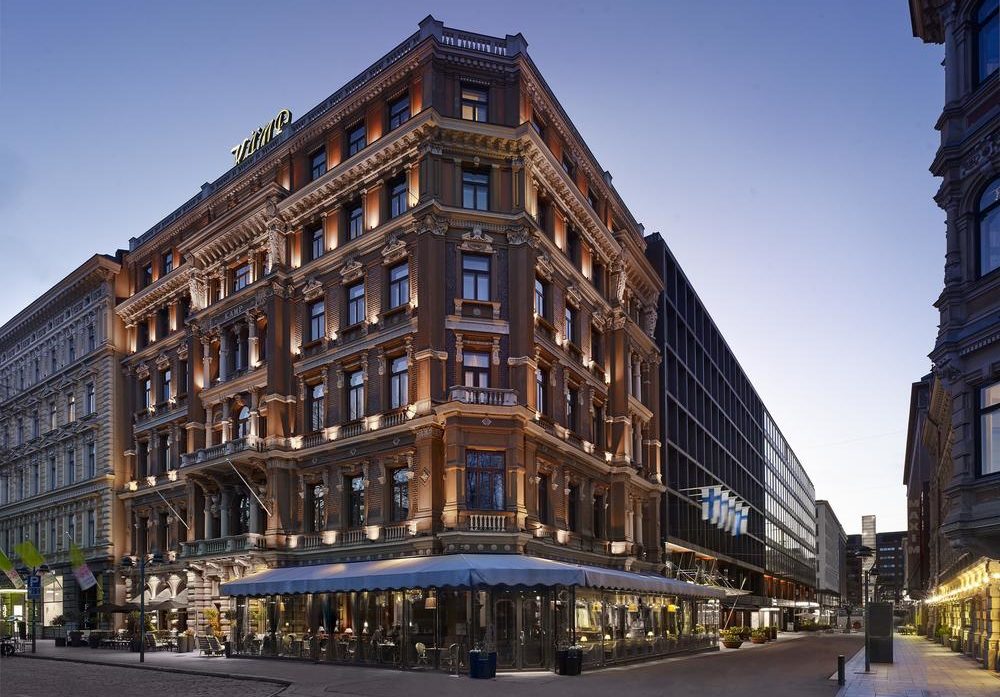 Located halfway down Esplanadi, this hotel is regarded as Finland’s most exclusive hotel. It has hosted many heads of state and performers including the late Michael Jackson.
Located halfway down Esplanadi, this hotel is regarded as Finland’s most exclusive hotel. It has hosted many heads of state and performers including the late Michael Jackson.
The hotel, originally built in 1887 by Carl Kämp, was designed by Theodor Höijer. The building was demolished and the facade was rebuilt in 1965. It was the head office of a Commercial bank for several decades.
A major restoration project started in 1996 which culminated in the reopening of Hotel Kämp in 1999 as a Luxury hotel. They have done a beautiful job restoring the hotel to its former glory. (official website)
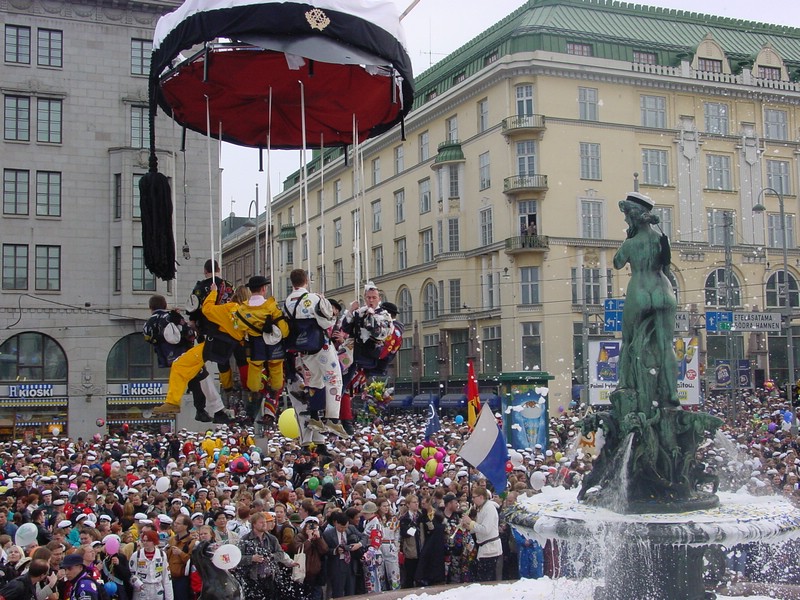 This mermaid statue is Finland’s most loved statue, but it was not always that way. When it was erected in 1908 it drew a lot of criticism as being lude, lustful and derogative towards women.
This mermaid statue is Finland’s most loved statue, but it was not always that way. When it was erected in 1908 it drew a lot of criticism as being lude, lustful and derogative towards women.
The artist, Ville Vallgren, who produced the work in Paris during 1906 meant for it to symbolize the rebirth of Helsinki. He simply called the work “the Mermaid”, but she has affectionately come to be nicknamed “Havis Amanda” over the years, or simply “Manta” by the Finnish speakers.
Every year on Vappu (the May day spring festival), the statue serves as a centerpiece for the celebrations. Students of the local universities put a graduation cap on the statue in an elaborate ceremony involving in excess of 100,000 spectators.
The hat placing on Havis Amanda kicks off 2 days of binge drinking for the whole country as they shake off the cold and darkness, and welcome in the spring.
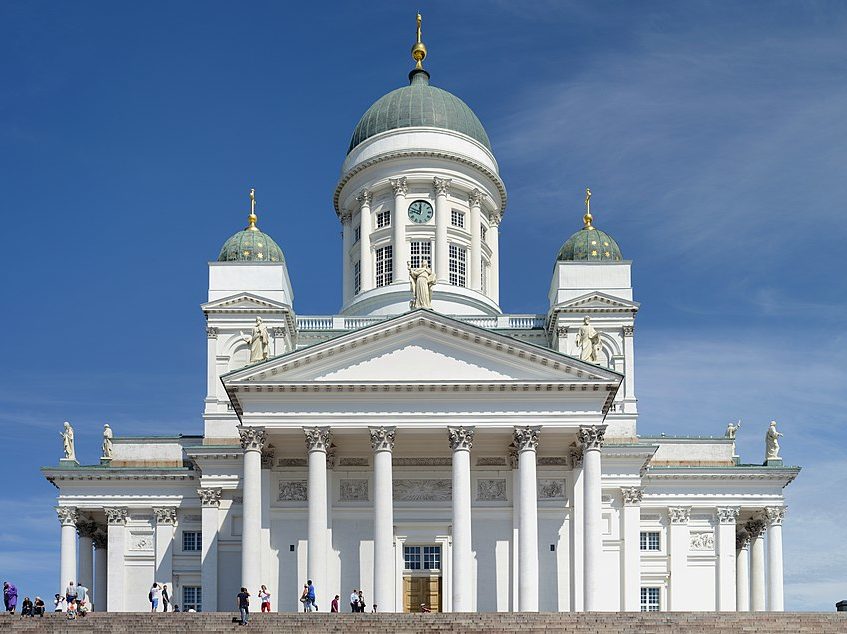
Helsinki Cathedral is a Lutheran cathedral that was built between 1830-1852 as a tribute to the Grand Duke of Finland, Tsar Nicholas I of Russia.
It was also known as St Nicholas’ Church until the independence of Finland in 1917.
A distinctive landmark in the Helsinki cityscape, the cathedral was built in the neoclassical style. The architect, Carl Ludvig Engel wanted it as the climax of his Senate Square layout.
The church’s plan is a Greek cross (a square center and four equilateral arms), symmetrical in each of the four cardinal directions.
The building was later altered by Engel’s successor Ernst Lohrmann who made some changed to the domes, erected two free-standing bell towers and added the zinc statues of the Twelve Apostles at the apexes and corners of the roofline.
The church is open daily from 9 am to 6 pm and until midnight in the summer. Entry is free.
(official website)
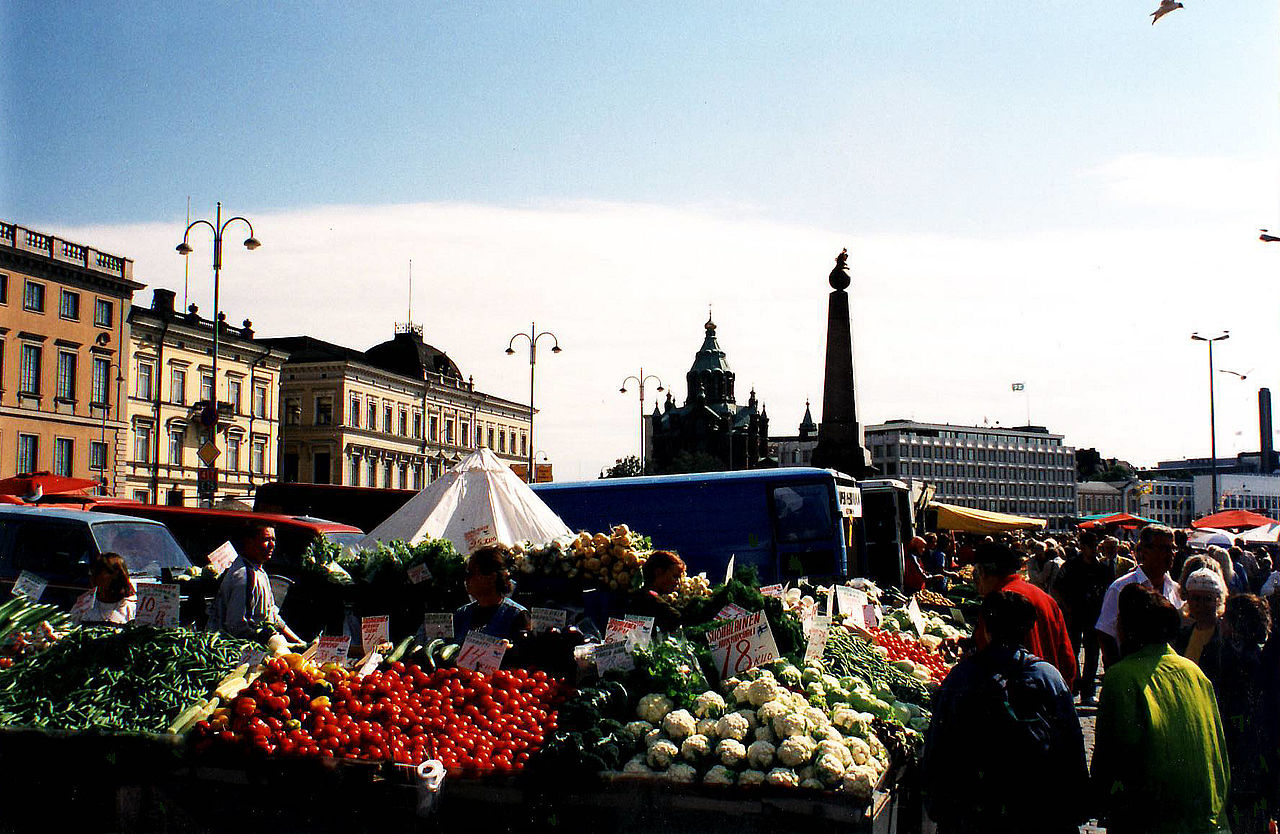 Translated to Market Square in English, this area is an open market where vendors sell fresh vegetables, cooked food, and souvenirs.
Translated to Market Square in English, this area is an open market where vendors sell fresh vegetables, cooked food, and souvenirs.
At certain times of the year, there are events including the Herring market in early October. A long tradition at Market Square is a display of old American cars on the first Friday of every month. Any motorist with an interest in old American cars may participate in the display.
Several cruises leave from Market Square as well as the popular scheduled ferry to Suomenlinna.
Watch out, seagulls have become an increasing menace in the Market Square, swooping down to snatch snacks and ice cream from the hands of unsuspecting tourists.
Check out the city’s website for upcoming events. (official website)
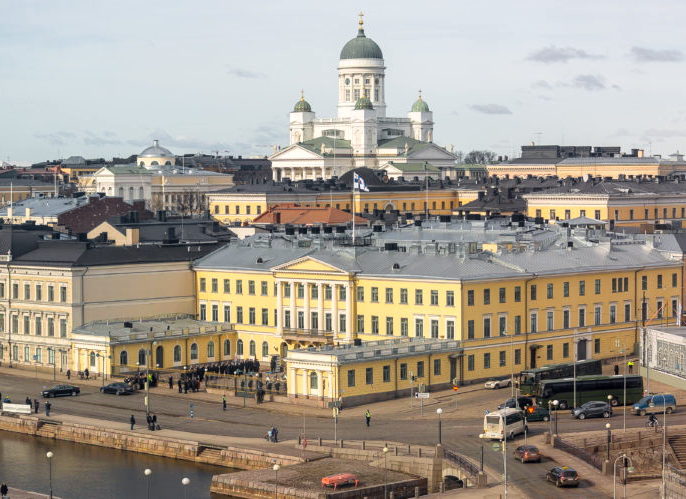
The site that is today the Presidential Palace had a humble start as a Salt storehouse before it was demolished to build a lavish merchant house in 1820.
In 1837 it was purchased and made into a residence for the Governor General to Finland. Nicholas I of Russia, ruler of Finland at the time, decided it should become his official residence in Helsinki.
After some renovations in 1845, it became known as the Imperial Palace in Helsinki. The building mostly sat empty and was first visited by a member of the Russian Imperial family 9 years later in 1854.
The Palace saw some use by the imperial family up until 1915 until it was converted into a temporary military hospital and then later back to a palace for Finnish presidents after the revolution that saw Finland receive its independence.
The Presidential Palace served as the official residence of most the Presidents of Finland up until 1993 when the new Mäntyniemi house became the official Presidential residence. (Most notably Urho Kekkonen, Finland’s longest-serving president of 26 years, refused to live in the palace due to the road noise and lack of a garden)
Today the Presidential Palace is used occasionally to receive international guests or for ceremonial occasions. If there are military guards outside the building it usually means the building is in use. (official website)
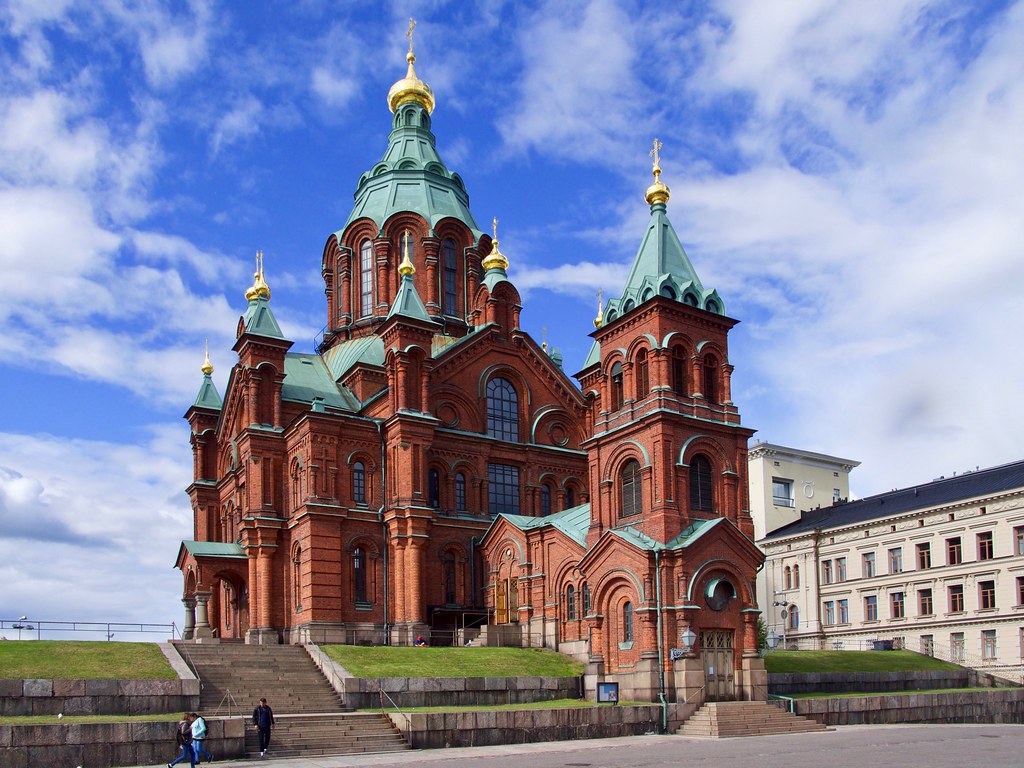 The Uspenski Cathedral is an Eastern Orthodox cathedral. It is set upon a hillside on the Katajanokka peninsula overlooking the city.
The Uspenski Cathedral is an Eastern Orthodox cathedral. It is set upon a hillside on the Katajanokka peninsula overlooking the city.
Designed by the Russian architect Aleksey Gornostayev (1808–1862). The cathedral was built after his death in 1862–1868.
On the back of the cathedral, there is a plaque commemorating Russian Emperor Alexander II, who was the sovereign of the Grand Duchy of Finland during the cathedral’s construction.
Admission to the Cathedral is free of charge. In winter, the Cathedral is closed on Mondays. (official website)
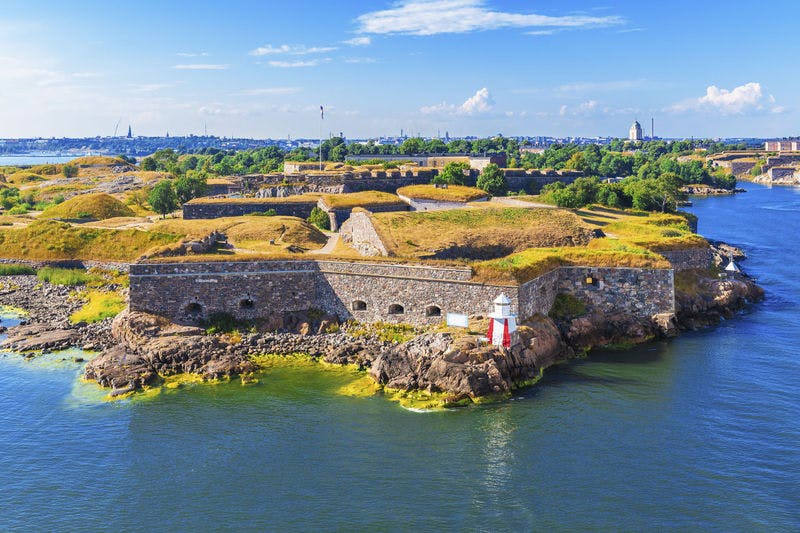 Suomenlinna is a UNESCO World Heritage-listed Sea Fortress and Castle on the outskirts of the harbor of Helsinki.
Suomenlinna is a UNESCO World Heritage-listed Sea Fortress and Castle on the outskirts of the harbor of Helsinki.
It is comprised of 6 islands. Its construction began in 1748, when Finland was still part of Sweden. The Swedish crown built the fortress as protection against Russian expansionism.
In the Finnish War between Sweden and Russia (1808-1809) the fortress surrendered to Russia on May 3, 1808, paving the way for the occupation of Finland by Russian forces in 1809.
It remained an active military base throughout the 19th century and was further fortified by the Russians for world war I.
After Finland gained its independence in 1917 the fortress became a prison camp during the Finnish civil war. No longer very practical as a military base, Suomenlinna was turned over to civilian administration in 1973. There are about 900 permanent inhabitants on the islands, and 350 people work there year-round.
To get to the island take the ferry from Kauppatori. The ferry is part of the Helsinki public transport network so normal public transport tickets can be used.
(official website)
Information on the Helsinki Red Full Day Self-guided Bicycle Tour (22-35) can be found here.